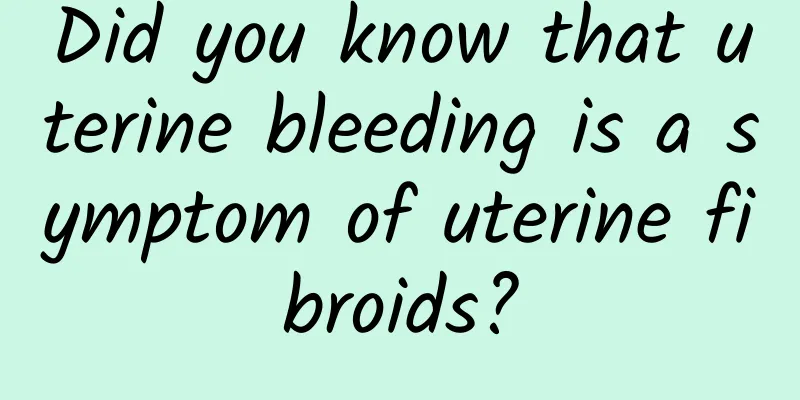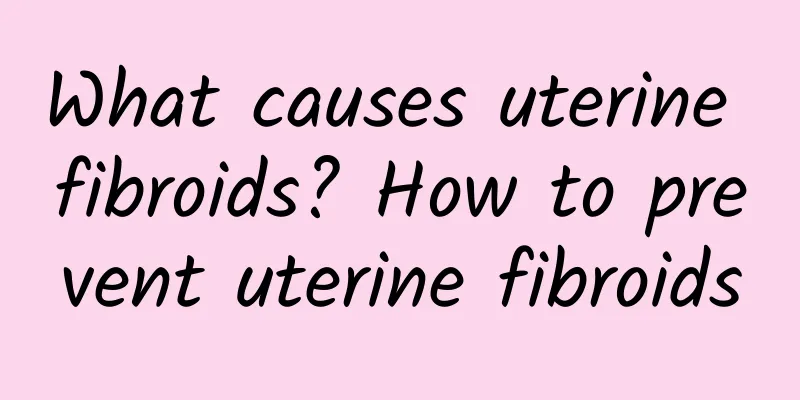Did you know that uterine bleeding is a symptom of uterine fibroids?

|
Whether uterine fibroids have symptoms and their severity are mainly determined by the location, size, number and complications of the fibroids. Some fibroids are small, grow slowly, and have no symptoms, and can remain undetected for a lifetime. Let our experts briefly introduce the symptoms of uterine fibroids to you and hope it will be helpful to you! In recent years, due to the widespread use of B-ultrasound examination, many patients were found to have uterine fibroids during routine physical examinations, but they themselves had no symptoms. Most patients came to the doctor because of the symptoms of uterine fibroids. Common symptoms of uterine fibroids include uterine bleeding, abdominal mass, vaginal discharge, compression symptoms, etc. Symptoms of uterine fibroids experts introduce to you: Uterine bleeding: Uterine bleeding is the most common symptom of uterine fibroids. Clinically, it can manifest as menorrhagia, cyclical bleeding, increased menstrual flow, often accompanied by prolonged menstruation. This type of bleeding is the most common; frequent menstruation, shortened menstrual cycle, increased menstrual flow; irregular bleeding, loss of normal menstrual periodicity, long duration, sometimes more, sometimes less, and continuous bleeding, which is more common in submucosal fibroids. Uterine bleeding is more common in submucosal fibroids and intermuscular fibroids, and subserosal fibroids rarely cause uterine bleeding. According to literature reports, the incidence of uterine bleeding in submucosal fibroids, intermuscular fibroids, and subserosal fibroids is 89.5% to 100%, 74% to 77.7%, and 33.3% to 36%, respectively. There are many explanations for the cause of uterine bleeding: ① Large or multiple intramuscular fibroids will inevitably increase with the enlargement of the uterus as well as the area of the endometrium in the uterus. During menstruation, a large area of endometrium is shed and the repair time is correspondingly longer, resulting in more bleeding and longer menstrual periods. ②The presence of fibroids between the muscle walls prevents the uterus from controlling bleeding through effective contractions, resulting in heavy bleeding. ③ Uterine fibroids mostly occur in the late reproductive age, during menopause. Some patients have small fibroids but heavy menstruation, which may be caused by concurrent dysfunctional uterine bleeding. This can be confirmed by curettage and examination of the endometrium. The above is a brief introduction of the symptoms of uterine fibroids by experts. Do you know them? If you have any questions about uterine fibroids, please consult our online experts. We will serve you wholeheartedly! Uterine fibroids: http://www..com.cn/fuke/zgjl/ |
<<: Why do women get ovarian cysts?
>>: Experts explain the causes of ovarian cysts
Recommend
How is pelvic inflammatory disease caused?
Pelvic inflammatory disease is a common gynecolog...
When can I have a baby after a miscarriage?
Many women just got pregnant, but they didn't...
Which hospitals treat congenital absence of vagina?
What are the hospitals that treat congenital abse...
Women should pay attention to the prevention of dysmenorrhea in time
Dysmenorrhea is a common disease among women. Gen...
Why haven’t I had my period after taking progesterone for 6 days?
Why haven’t I had my period after taking progeste...
What are the early symptoms of bacterial vaginosis?
Bacterial vaginosis is one of the common gynecolo...
What should I do about uterine fibroids? What are the dietary treatments for uterine fibroids?
Uterine fibroids are a common uterine disease. Th...
What are the symptoms of uterine fibroids? What is the view of traditional Chinese medicine on uterine fibroids?
Uterine fibroid disease harms the physical and me...
Let's learn how to regulate menopause? Through these 3 points
Menopause is an important and necessary stage in ...
What causes premature ovarian failure?
The ovaries are the most important organs of wome...
What is the reaction after eating miso? Let's find out
Different reactions will occur after taking miso,...
Does adenomyosis cause dysmenorrhea?
The occurrence of adenomyosis is very terrible an...
What should a young girl do if she suffers from uterine fibroids? Who are the high-risk groups for uterine fibroids?
Many people think that uterine fibroids belong to...
Talk to the experts about the symptoms of ectopic pregnancy
Ectopic pregnancy is a common disease among women...
Effective method for treating mild postpartum cervical erosion
The treatment methods for postpartum cervical ero...









